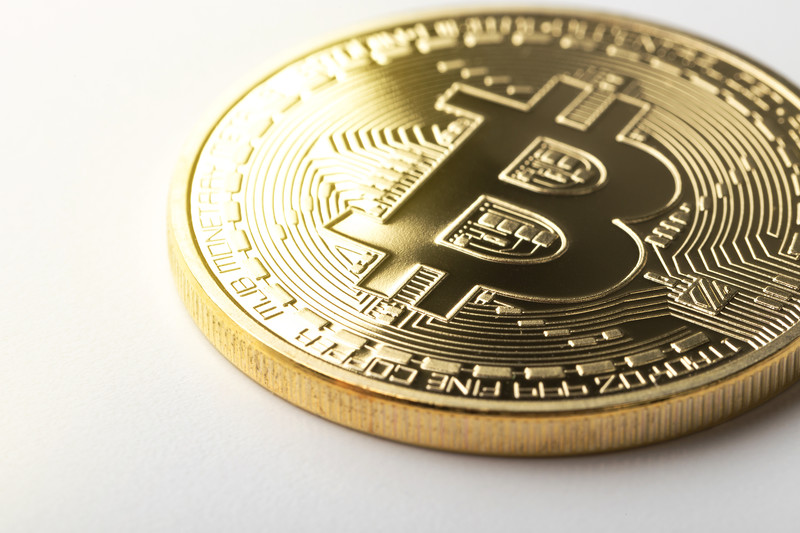Bitcoins Basics
Around 8 pm on 8th November 2016, Narendrabhai Damodar das Modi appeared on TV and announced that the 500 denomination and 1000 denomination banknotes in circulation will cease to be legal tender post midnight the same day. In a matter of a few hours excess of 80% of circulating currency became a useless piece of colored paper. Yet globally there is a currency that is yet not considered legal tender, but its value goes on increasing. As I write this one unit of that currency in India is worth a whopping Rupees Twenty Six Lacs Twenty Six Thousand Two Hundred Eighty Fives and paisas Thirty only(Rs 26,26,285.20/-). It is a currency that you cannot hold in your hand, can only own digitally, and can easily make or break a person’s fortune. Yes, we are talking about the cryptocurrency Bitcoin, popularly known as BTC.
A bitcoin is a cryptocurrency, i.e. a currency not physically held, only digitally tendered, existing only as balances across a transparent public ledger. The transactions are approved employing open computation over a secure network and are not issued by any bank or central institution. The transactions are primarily peer-to-peer and of extremely low transaction cost. While Bitcoin is the first and most popular cryptocurrency there are a multitude of other cryptocurrencies now popular like Ethereum, Doge, Matic to name a few, all of which are collectively called altcoins
In January 2009, the technology for cryptocurrency was proposed by a person (or a group of persons) operating under the pseudonym of Satoshi Nakamoto, through which transactions of a currency that would be of lower transaction cost, secure, transparent, and decentralized was proposed. It would be open-sourced, not owned by anybody and anyone could participate in its transaction.
What does it offer for an individual? If you are wanting to do a transaction all you need is a QR code to scan or tap one mobile with another using RFID/NFC technology and voila your transaction is through. No need for card swiping, pins, or any kind of documentation. The transaction is secured by the absoluteness of mathematics. Cryptographic signatures ensure other people cannot use your money, and also that once transacted it cannot be undone, rearranged, lost or modified. Thus a transaction with cryptocurrency is absolute. This technology is on 24x7x365 and not dependent on software and wallets. As long as you have the receiver’s bitcoin address, you can make a transaction anytime anywhere as easy as sending out an email or a text message. Since there are no banks and clearing houses involved in the transaction there is no waiting period and fees for transactions are limited. The technology also allows anonymity of the sender and receiver if so desired.
What does this mean for businesses? For a business, the most important aspect is in fraud control. Since the transaction is secured by a crypto signature, it is absolute and irreversible. Consequently, frauds are not possible. Also, since there are no card numbers and such, possibilities of misuse and fraud regarding such numbers are limited. Therefore a transaction once done is indisputable and free of possibilities of fraud. As mentioned earlier there are no banks and clearing houses involved, hence the concept of anywhere anytime real-time transaction holds true for cryptocurrency transactions. This includes transactions across the globe which becomes as seamless as a transaction that’s face to face. The charges of the transactions are also lower, with no charge being levied on receiving and only the sender pays a fee. Also, such fees may not be volume-based hence a high-value transaction can attract the same pre-determined fee as a low-value transaction making high-value transactions using BTC cheaper and lucrative. The cryptocurrency network comes with its own security fail-safes, because of which there is no requirement of the receiver to invest in a data security system as per the Payment Card Industry requirements that a normal digital transaction using a card, wallet or net banking system would need. The technology also allows for multiple sign-offs for various kinds of transactions. Thus within an organization limits of transaction with approving authority in a certain hierarchy can be set up. This will not only make the transactions secure, but it is openly visible as to who is approving transactions within the structure. Last but not least since the transactions are all on a public ledger, there is absolute transparency of the transaction accounting.

The technology of bitcoins and for that matter cryptocurrencies is based on a complex network of computing systems called the blockchain, which is essentially the public ledger on which the cryptocurrency transactions are stored. The blocks in the chain hold a hash of all transactions of previous blocks right up to the first block or the genesis block designed by Satoshi. Communicating nodes, running on the bitcoin software ensures that the blockchain is up running and accessible to the nodes. When A decides to send B amount to receiver C, this transaction is recorded in the blockchain network as a broadcast and updated in the blockchain, becoming available to all accessing nodes. In prefixed and variable intervals averaging 10 minutes accepted transactions or blocks are created and added onto the blockchain, which then gets published to individual nodes. Thus the bitcoin software can identify which bitcoin is being spent. Unlike a conventional ledger where only actual bills and promissory other than the bills are recorded, the BTC ledger allows for a record of BTC as unspent transaction outputs.
To make the network stronger and robust transaction information is verified employing complex mathematical puzzles. This is particularly necessary to prevent double-spending. Double spending is when a payer makes a transaction using a bitcoin but holds on to the bitcoin or spends the same on another transaction. Every time a block is added it is necessary to ensure that this doesn’t happen, which is done by the bitcoin miners at the node level. The reward for such mining or validation is a bitcoin. The number of bitcoin that is released for every block mined or validated block is called the block reward. For every 210,000 blocks mined the block reward is halved, whereby in 2009 a block would fetch you 50 BTC, as of May 2020 it stands at 6.25 BTC. This will ensure that the total number of currency that is expected to reach as of 2134, when halving will cease is believed to be 21 million. Thus the currency becomes a finite commodity and hence the value increases progressively just like a limited asset like gold. Thus a miner verifies a block of transactions worth 1 MB data, which could be a single transaction but more often than not way more. He also needs to solve a mathematical problem called proof of work, which involves computation of a “hash”. A hash is 64 digit number based on the hexadecimal system. The miner has to come up with a hash that lower or equal in value to a predetermined target hash value. The miner’s system can generate hash’s at rates of Giga or Terra hashes per second, making this a gamble. The difficulty level is adjusted according to the computing level available in the blockchain system. Thus if there is more computation available the difficulty is increased, while if the computational ability goes down in the network the difficulty level will go down. This adjustment happens roughly every 2016 block. The difficulty level in august 2020 mining was such that the probability of hitting the target hash was one in 16 trillion computations. Mining is thus as much a game of luck as validation of the block, as when it comes to hitting the right hash, not only do you have to hit the right value but also have to hit it first to qualify.
However, like all things that sound good, bitcoin also comes with its fair share of controversy. The most important controversy regarding bitcoin is concerning its volatility in prices. Starting from less than a dollar value it has gone up to a high of over 19 thousand dollars and seen various cycles of booms and busts depending on the security of the mining and transaction security of the bitcoins. Other factors like acceptance of the bitcoins, as buy-ins and endorsements by influencers and speculators have also led to huge increases in the prices of the bitcoin. Most recently tweets of Elon Musk and his endorsement of Bitcoins have led to a huge upsurge of bitcoin value. The second most important criticism of the BTC is in its use in the propagation of unlawful transactions particularly on the black market and dark web on account of the anonymity of transactions that it offers. It is believed it is becoming a tool of negative elements and anarchist elements looking to disrupt established systems. The fact that despite being a digital currency millions worth of BTC have been lost or stolen had raised questions on the security of the network. Indeed that has also contributed to various busts in the BTC prices. The high carbon footprint due to electricity consumption in the mining process is also of concern.
But in a milieu that is progressively evolving towards technology and enabled by technology cryptocurrency seems to be an inevitability of tomorrow as has been indicated by Musk. The South American nation of El Salvador has already declared BTC to be legal tender acceptable there, while china stands at the opposite end of the spectrum banning cryptocurrencies. How soon the world adopts and in what manner to this form of currency and its trade is for the future to show.






